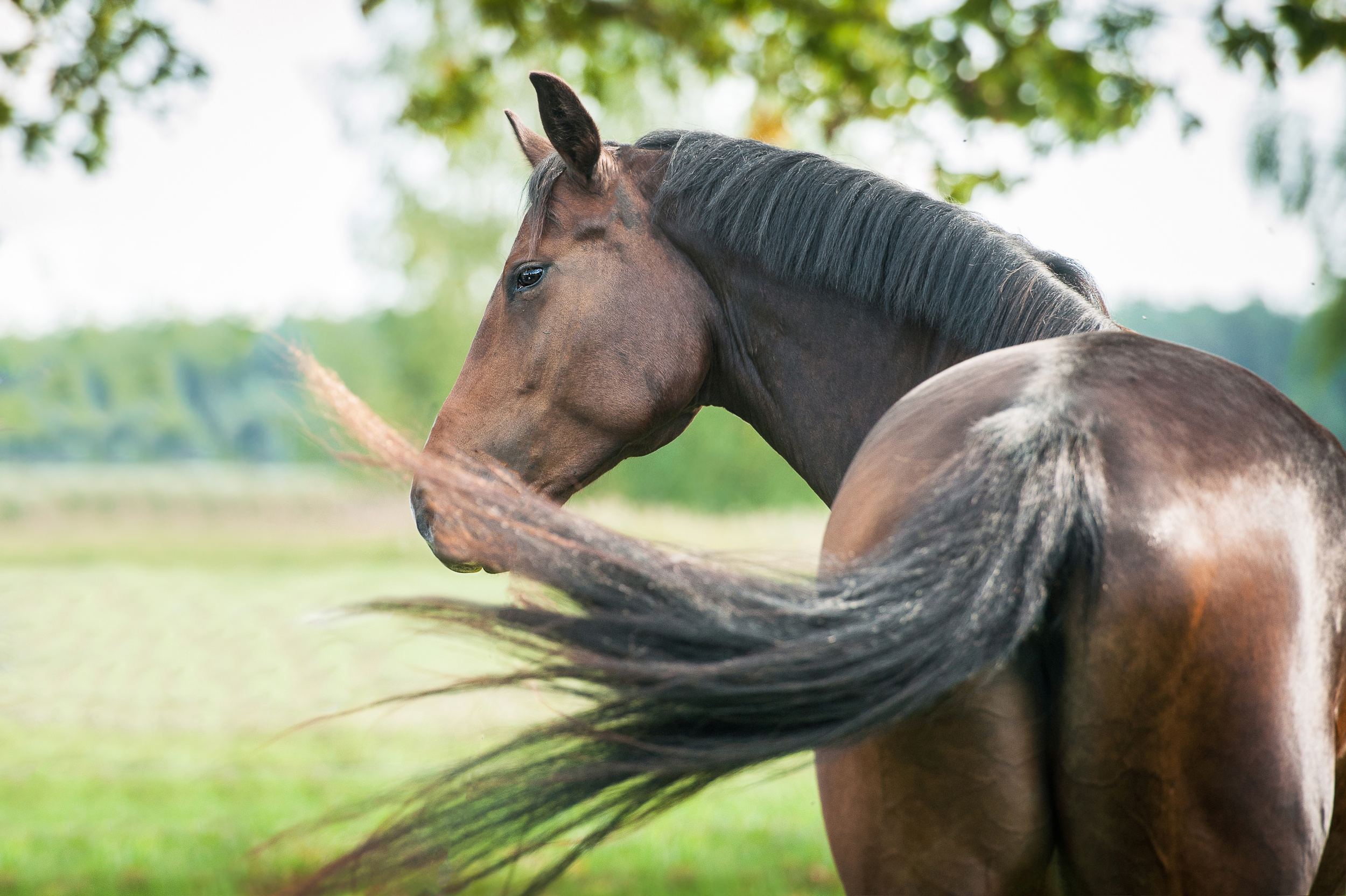Listen here:
The clump of long chestnut hairs on the stall wall was a mystery, until you saw the top of your horse’s tail. He’s been rubbing it raw against the wall, but why? The simple answer is “it’s itchy,” but to find a solution, you will need to investigate. A methodical check of his hindquarters can usually reveal the problem.

First, look for evidence of pinworms. These parasites, which emerge from a horse’s anus to lay eggs on the sensitive skin nearby, have made a resurgence in North America recently. The eggs trigger itchiness that helps spread them through the environment as the horse rubs against fence posts and trees. The eggs may be visible as small, white plaques around the anus. Your veterinarian can also check for unseen eggs by sticking a piece of clear tape to the area, removing it and then examining it under a microscope.
If you suspect your horse has pinworms, call your veterinarian before starting any treatment. You’ll want to be sure to select a deworming agent that is effective against that parasite in your geographic area.
Next, inspect the tail itself. Separate the hairs to check the skin along the tailbone and lift it to examine the underside as well. You’re looking for anything that might cause itchiness, such as a tick bite or other irritation. Removing any ticks and treating the bite area with a topical corticosteroid should relieve the problem. If the irritation on the skin of the tail is widespread, your horse may have contact dermatitis—consider whether you’ve used any new bathing or grooming products or whether he may have brushed up against something new in his environment. Limit his exposure to any suspected culprit and see if the tail rubbing resolves.
Finally, if the tail itself looks fine, check between the hind legs forward to the sheath or udder area. This is a prime location for tiny Culicoides midges to feed, which can set off an allergic reaction known as “sweet itch.” These insects also feed along the crest, so affected horses may also rub their necks. You’ll know they are the culprits if you find inflamed, oozy, crusty skin and your horse seems exceptionally grateful when you scratch the area. Controlling sweet itch can be difficult, but keeping the horse indoors at dawn and dusk, when the insects are most active, is a good first step. Severely affected horses might benefit from systemic injections of corticosteroids.
This article first appeared in EQUUS issue #469,
Don’t miss out! With the free weekly EQUUS newsletter, you’ll get the latest horse health information delivered right to your in basket! If you’re not already receiving the EQUUS newsletter, click here to sign up. It’s *free*!









